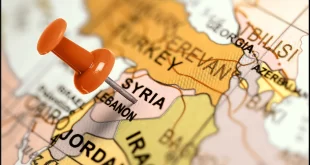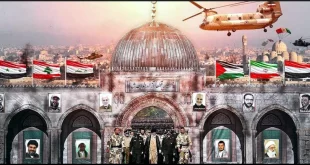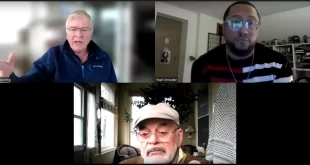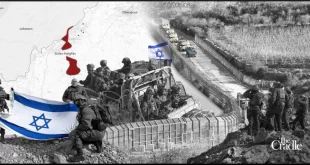Jun 15, 2015, Global Research
-Reme Sakr
The situation in Syria’s south seems to have turned for the worst in recent weeks, and at the heart of the south is Sweida Mountain (Jabal al-Arab or Jabal al-Druze), home to most of the region’s Druze people.
After Jabhat al Nusra (al Qaeda in Syria) seized the 52nd Brigade base in Daraa, their attention was turned to the Thaaleh military base in Sweida’s west where, for the past few days, local villagers along with the National Defence Forces and the Syrian Arab Army, have been deep in battle against the AlQaeda group who if successful in overrunning the base, would expose Sweida entirely from the West.
Closer to the city, at least two people were killed this week when mortars landed on their houses. This was the first such casualties in Sweida. The attack was an attempt by sleeper cells inside the province to create a distraction for security forces. Local news sites later reported that the perpetrators were found. Their launching positions in the Maqwas area on the eastern outskirts were discovered the very same day.
Being under a semi siege, the Druze mountain is facing its biggest threat since the beginning of the war. According to local sources on the ground and social media sites reporting on updates from Sweida, a meeting has taken place between the General Secretary of Hezbollah, Sayyed Hassan Nasrallah, and the Lebanese MP Talal Arslan. In coordination with the Syrian government a decision was made to send weapons and reinforcements from Lebanon to Jabal al-Arab to support Sweida’s defence.
Although no other media outlets have reported on this, if it is true, Hezoballah getting involved in the defence of Sweida is a highly significant move. It would be a direct message to the Zionists over the border.
According to Reuters this week, the Israeli President expressed his concern to US President Barrack Obama over the fate of Syria’s Druze, in the face of the Islamist threat creeping onto the Druze homeland. What Rivlin was setting the mood for was a pretext for Israeli intervention in the Syrian south to supposedly protect the Druze from the same Jabhat al Nusra militants that his government is helping.
President Rivlin’s gesture was firmly rejected by Sweida’s leaders, who accused Israel of playing its usual dirty politics to serve its own interests in the region. Sheikh Yousef Jarboue of Sweida in an interview with the Lebanese ‘Al Mayadeen’ responded by saying that if Israel cared about the Druze, then they should stop using the occupied Syrian Golan Heights to provide medical treatment to the Al Qaeda takfiri (sectarian terrorist) groups, who are not only a threat to the Druze but to all Syrian people.
Rivlin’s statement was merely an attempt to depict a lack of confidence in the Syrian army and to falsely present Syria’s Druze as allies of the Zionist state who are open to foreign intervention. Sheikh Jarboue reiterated that Sweida’s safety lies with the Syrian government, and as a province of a united Syrian Arab Republic.
Israel has tried to subdue the Druze in the occupied Golan Heights by repeated attempts to force Israeli citizenship upon them. Just this year Israeli security forces arrested 48 year old Sedki al-Maket, a Druze from the occupied Golan, for filming a meeting between Israeli officials and Al Qaeda militants near the Syrian border.
Israel has every reason to portray the Syrian war as a sectarian conflict and to sell the idea of partitioning Syria. Having a Druze State, a Sunni state, and an Alawite state would then give a Jewish state the legitimacy that it so desperately needs.
This is just how the Yazidis in Iraq, who have now disappeared from international headlines, were used as the pretext for the launch of the US-led coalition’s useless bombing campaign against ISIS. Israel would like to paint the Druze as helpless victims, in need of saving.
However, the situation on the ground tells otherwise. The Druze are organising. Close coordination between the Syrian army and local defence groups indicate that the Syrian government still occupies a strong support base in the Druze south. The prospect of Sweida falling into the hands of AlQaeda, like Palmyra and Idlib before, seems very slim for a number of reasons.
Firstly, as well as the Sweida National Defence Forces and Jeish al Muwahideen who have been active since the beginning of the war, a new battalion containing 33 different factions was launched last month. ‘Dere’a al Watan’ or ‘The homeland Shield’, under the leadership of the retired army General Nayef al-Aaqel is believed to have mobilised and armed at least 100 thousand civilians of Sweida’s men and women.
Secondly, there is absolutely no support base for the terrorists in Sweida. The Druze are considered heretics by radical Islam and the recent Jabhat al Nusra killings of Druze villagers at Qalb Lawzeh (Idlib province) were further proof of the impossibility of them surviving under an extremist Sunni rule. While terrorist groups in other parts of Syria may have found support from a small minority of AlQaeda sympathisers in those areas, they can be sure that no jihadis will be welcomed in Jabal al-Druze.
Thirdly, no towns or villages were evacuated in Sweida. Leaders have stated that the locals themselves alongside the Syrian Army will form the frontlines of defence against Al Qaeda’s Jabhat al Nusra from the west and ISIS from the east.
Sheikh Hussein Jarboue confirmed that there will be no concessions or negotiations made with the militants attacking the Druze homeland. This is contrary to the stance of Lebanese Druze politician Walid Joumblatt, who called for the Syrians to desert their army and agree to a settlement with Jabhat al-Nusra.
Anyone following the conflict must understand that the events currently unfolding in Sweida are not a threat to the Druze only, but a threat to the whole of Syria. While the threat against the Druze is serious and real, all of Syria’s communities are facing extinction from the Western-sponsored takfiri groups.
Just like the attacks on Maaloula, Kassab, and Kobani before, an attack on Sweida threatens Syria’s unity and distinct pluralist fabric. While there is a constant effort to report the Syrian war in sectarian terms, the truth is that the extremist takfiri groups are a threat not just to minorities or even just Syria, but to the whole region.
 Syria Support Movement solidarity with the Syrian people
Syria Support Movement solidarity with the Syrian people




